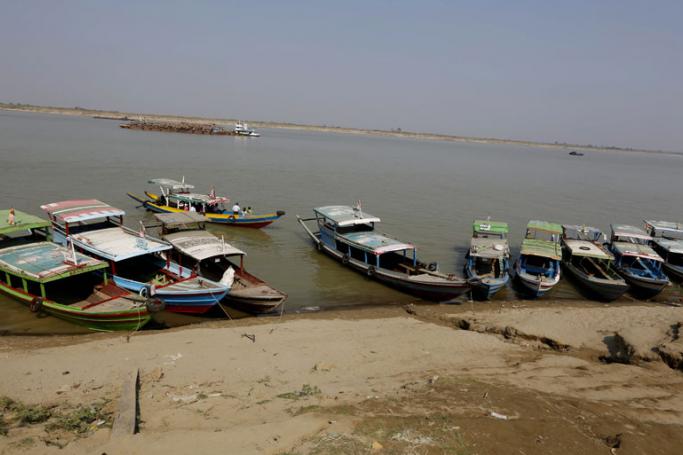Proposals to encourage investment in Myanmar’s inland waterways could help ease road congestion, as well as provide a cost-efficient route to economic development.
In July the government announced plans to begin consultations with regional authorities to develop six inland maritime port terminals – four on the Ayeyarwaddy River and two on the Chindwin River.
The Ayeyarwaddy ports will be built at Mandalay, Pakkoku, Sinkham and Magway, while the Chindwin ports will be located at Kalewa and Monywa, U Thant Sin Maung, minister of transport and communications, said in a statement.
Private investment is needed to bridge transport infrastructure deficit.
Closing the transport infrastructure gap is a key focus area of the National Transport Master Plan, of which the new inland ports are a part.
Launched in 2014, the plan outlines a series of investments, infrastructure projects, and reforms that aim to reduce shipping costs and expand transport capacity, with the ultimate goal of increasing transport sector investment from 1-1.5% of GDP to 3-4%. This would put Myanmar roughly on a par with Thailand and Vietnam.
Stakeholders and officials agree that greater spending will be needed to boost domestic connectivity. U Phyo Min Thein, chief minister of the regional government of Yangon, cited road and rail link upgrades as priority areas, along with development of inland waterways, which could become Myanmar’s main freight artery.
“Another point of intervention will be the improvement of the navigability of our rivers, since water transport is the most competitive transport solution,” Phyo Min Thein told OBG.
However, given limits on state spending, much of the infrastructure development for maritime, road, rail and air set out in the government’s plans will need to rely on public-private partnerships (PPP).
“The ministry still has difficulties … implement[ing] the master plan due to budgetary constraints,” U Win Khant, permanent secretary for the Ministry of Transport and Communications, told an investment seminar in late September.. “With … very poor infrastructure, very limited budget and weak legislation, the one and only way to carry out the master plan is through PPPs.”
The transport sector as a whole will require some $60bn worth of investment over the next 20 years to support economic development, according to estimates from the Ministry of Transport and Communications.
This represents approximately half of the $120bn officials project is needed to close the overall infrastructure deficit, with the balance split between the energy and power industries, which require a combined $40bn, and the telecoms sector, which is in need of $20bn.
Inland maritime projects are said to offer attractive returns on investment.
In a report issued in July 2016, the Asian Development Bank (ADB identified investments in river transport as offering some of the best returns. The extensive river network is well placed to serve the primary transport corridors, including the link between the economic centres of Yangon and Mandalay.
“Cost reduction by up to a factor of three seems possible, with only limited-scale investments,” the report said. However, relatively little has been done to date to utilise inland shipping as a means of transport, and the necessary supporting infrastructure remains underdeveloped.
In particular, key inland channels like the Ayeyarwady are hampered by shallow depths, limiting the size of vessels that can use them.
Among the development priorities cited by the ADB is deepening the stretch of the Ayeyarwady flowing north to Mandalay to at least 1.5-2 metres. This would allow 500-tonne vessels to navigate the river year-round at higher speeds. According to the bank, investing roughly $100m in such improvements could generate $3bn in transport cost savings.
This Myanmar economic update was produced by Oxford Business Group.
You are viewing the old site.
Please update your bookmark to https://eng.mizzima.com.
Mizzima Weekly Magazine Issue...
14 December 2023
Spring Revolution Daily News f...
13 December 2023
New UK Burma sanctions welcome...
13 December 2023
Spring Revolution Daily News f...
12 December 2023
Spring Revolution Daily News f...
11 December 2023
Spring Revolution Daily News f...
08 December 2023
Spring Revolution Daily News f...
07 December 2023
Diaspora journalists increasin...
07 December 2023
NLD rally supporters arrested in China, then freed












